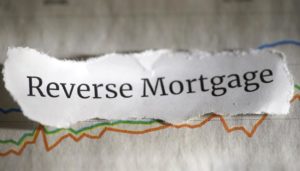Table of Contents
If you’re a homeowner looking to leverage the equity in your home to secure a financial future, reverse mortgages might be the best option. A reverse mortgage can be an incredibly helpful financial tool for retirees and seniors, giving access to wealth built up within their homes without monthly mortgage payments. In fact, reverse mortgages have become extremely popular in recent years. The reverse mortgage market will grow by a CAGR of approximately 15%, between 2021-2026.
Leaping requires careful consideration and an in-depth knowledge of the process. From meeting eligibility requirements to selecting an ideal loan type and searching for reliable lenders through application procedures and beyond, our seven-step roadmap can guide you on this important financial journey with confidence and ease.
So, let’s dive into this comprehensive reverse mortgage guide and explore the seven steps for an efficient application process that can help you achieve your financial goals.
7 Steps For An Efficient Reverse Mortgage Application Process
Educate Yourself

Before applying for a reverse mortgage loan, it’s essential to gain an in-depth knowledge of what the product entails and its inner workings, from research sources, seminars, and financial advisors who specialize in this form of lending to you personally. Start your research today. A well-informed borrower is more likely to make sound decisions throughout the process.
Meet Eligibility Requirements
To qualify for a reverse mortgage, you must meet certain eligibility criteria. These typically include being at least 62 years old, owning or having substantial equity in your home, and the house being your primary residence. Furthermore, HUD-approved counselors will conduct mandatory counselling sessions, so you fully comprehend its terms and implications.
Choose the Right Loan Type
Reverse mortgages come in various types, each with its terms and benefits. Home equity conversion mortgage (HECM), insured by the Federal Housing Administration (FHA), is the most prevalent reverse mortgage type available. However, proprietary reverse mortgages offered by private lenders also exist, and it’s essential that you carefully consider all available options to find one that best meets your goals and needs.
Shop for a Lender

Select an experienced reverse mortgage lender with excellent customer service. Don’t be intimidated to compare interest rates, fees, and terms from multiple lenders so that you get the best deal. Your lender should provide a comprehensive overview of all associated costs with their loan product.
Complete the Application
Once you’ve chosen a lender, the next step in applying for a reverse mortgage should be filling out an application. To successfully complete it, provide all relevant financial data including income, assets, and liabilities along with financial assessments by your lender. This is important to determine whether you can pay ongoing expenses such as property taxes and homeowner’s insurance premiums on time. Be prepared with all documents promptly to keep this process moving quickly.
Appraisal and Underwriting
After receiving your loan application, your lender will arrange for an appraisal to assess its value. The appraisal is essential because it will impact the amount you can borrow through a reverse mortgage.
Once an appraisal is complete, your lender will send your application for underwriting review. At this stage, an underwriter will assess your financial qualifications and ensure all required paperwork is in order.
Closing and Disbursement

If your application is approved, the closing phase will follow. Here you’ll sign all necessary documents such as loan agreements and repayment terms before receiving your funds in any of several forms: lump sum payments, monthly installments, or even as line of credit loans. It all depends on what best fits with your financial goals and needs.
In Closing
The reverse mortgage application process need not be a daunting experience if you follow these seven essential steps diligently. We embarked on this journey through our comprehensive reverse mortgage guide to empower you with the knowledge and tools necessary to make the best financial decisions for your retirement and beyond.
From educating yourself about the intricacies of reverse mortgages to meeting eligibility requirements, selecting the right loan type, and finding a trustworthy lender, each step plays a crucial role in ensuring the efficiency and success of your application. Completing the application, undergoing an appraisal, and finalizing the closing are all integral stages in this process, ultimately leading to the disbursement of your funds.
By adhering to these steps and maintaining a commitment to informed decision-making, you can unlock the potential of your home equity while securing your financial future. Keep this in mind when considering reverse mortgages: their purpose is to improve retirement by offering greater flexibility and peace of mind. So whether you aim to supplement income streams, eliminate monthly mortgage payments, or meet other financial objectives more easily and quickly, these steps will assist in reaching them efficiently and effectively.
Author Profile

- Guest Blogger & Outreach Expert - Interested in Writing Blogs, Articles in Business Niche | News Journalist By Profession in the United Kingdom
Latest entries
 BusinessJuly 1, 2025Wills for Business Owners: Safeguarding Your Enterprise and Legacy
BusinessJuly 1, 2025Wills for Business Owners: Safeguarding Your Enterprise and Legacy Business TipsJune 6, 2025Confidence That Connects the Message
Business TipsJune 6, 2025Confidence That Connects the Message GamingMay 9, 2025Why AI Personalization Is Key for the Next Generation of Betting Platforms?
GamingMay 9, 2025Why AI Personalization Is Key for the Next Generation of Betting Platforms? Business StrategiesMay 1, 2025Key Business Development Strategies for Fostering Sustainable Growth
Business StrategiesMay 1, 2025Key Business Development Strategies for Fostering Sustainable Growth




